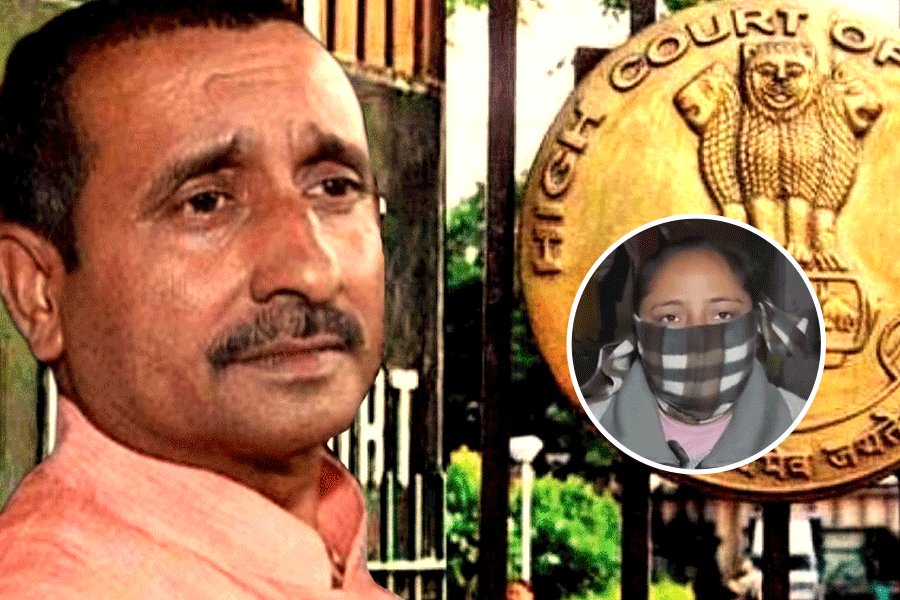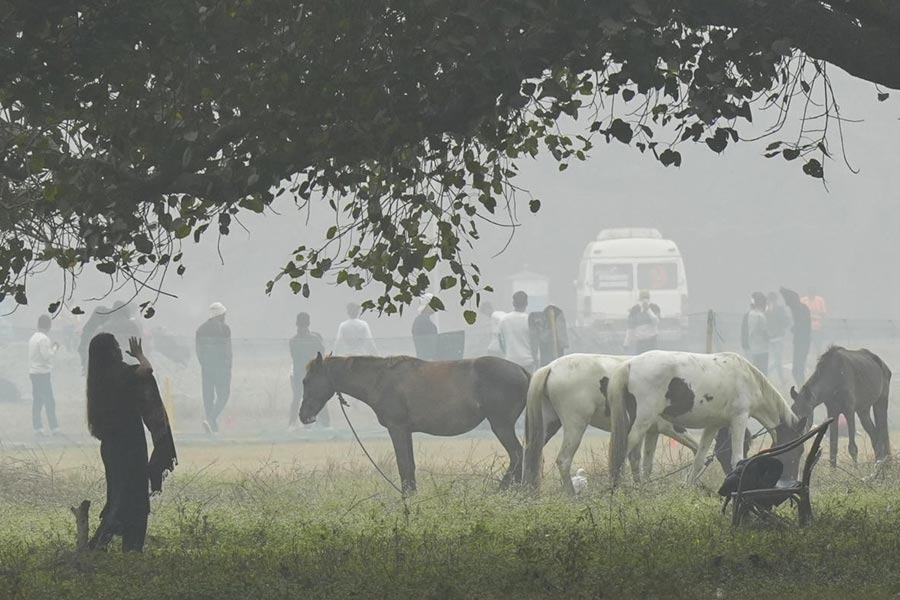 |
| (Clockwise from top left) IIT team members Anshup, Kamalesh Chaudhari, Thalappil Pradeep, Amrita Chaudhary, Avula Anil Kumar, Sahaja Aigal, Mohan Udhaya Sankar and Shihabudheen Maliyekkai who developed the purification system |
New Delhi, May 7: A water purification technology based on a synthetic sand-like material developed by scientists in Chennai could, they say, provide clean drinking water to a household for less than Rs 120 a year.
Scientists at IIT Madras say the purification technology, based on their “synthetic granular nanocomposite”, has been shown to remove arsenic, lead, E. coli bacteria and a virus called bacteriophage from water.The technology, developed by Thalappil Pradeep and his colleagues at IIT Madras’s chemistry department and described yesterday in the US journal, Proceedings of the National Academy of Sciences, is ready for commercialisation.
Water purification systems based on this technology are currently under evaluation in Bengal at sites in Murshidabad and Nadia where groundwater is contaminated with high levels of arsenic, Pradeep said.
“This technology offers unique features,” Pradeep told The Telegraph. “The composite can be synthesised in water at room temperature through simple materials and the purification is achieved without electricity.”
The composite is made from aluminium oxyhydroxide and a biopolymer called chitosan with silver particles embedded within the material.
“The result is a unique cage-like material that traps contaminants such as arsenic and lead while silver ions released into the water destroy bacteria and viruses,” said Pradeep.
The scientists caution that the technology has been experimentally tested against only two micro-organisms — E. coli bacteria and a specific bacteriophage strain.
Pradeep believes the technology could provide more than just clean drinking water to rural India.
The technology is suitable enough to be propagated through cartridges, which could generate employment in villages, the IIT Madras scientists said in their paper.
“The production of composites and water filter devices and their deployment and servicing (within rural communities) could contribute to the local economy,” the researchers wrote.
The scientists believe the biopolymer chitosan reinforces the aluminium oxyhydroxide and imparts “exceptional stability and strength” to the composite in water.
“Arsenic or other such contaminants get into the cage and get adsorbed on the nanoparticles, becoming part of the cage itself, while the silver ions emerging from the cage kill microbes,” Pradeep said.
The other members of Pradeep’s team are Mohan Udhaya Sankar, Sahaja Aigal, Shihabudheen Maliyekkai, Amrita Chaudhary, Anshup, Avula Anil Kumar and Kamalesh Chaudhari.










